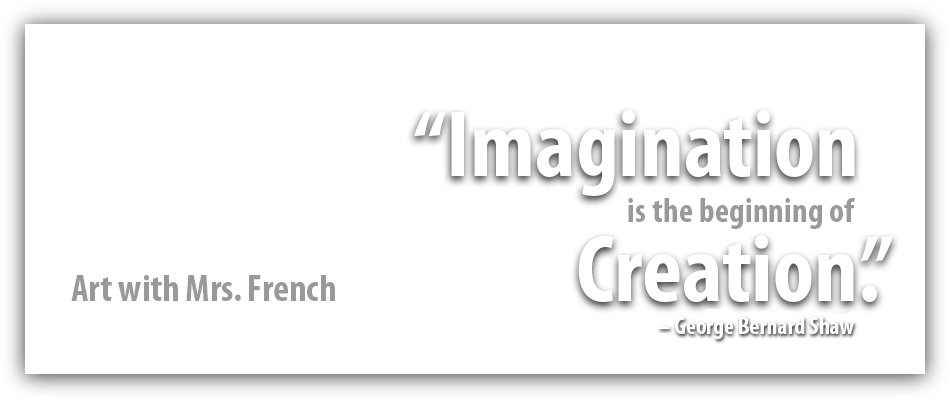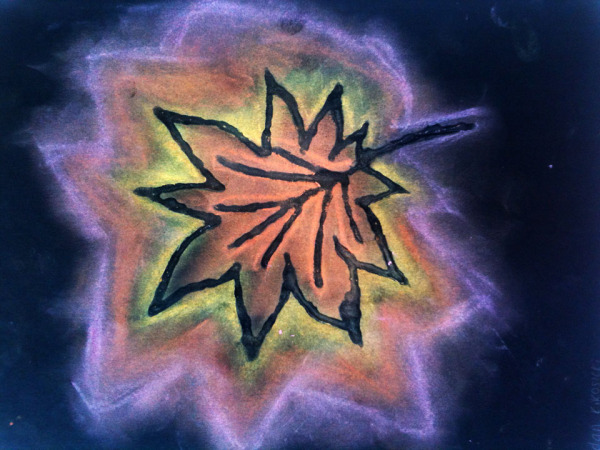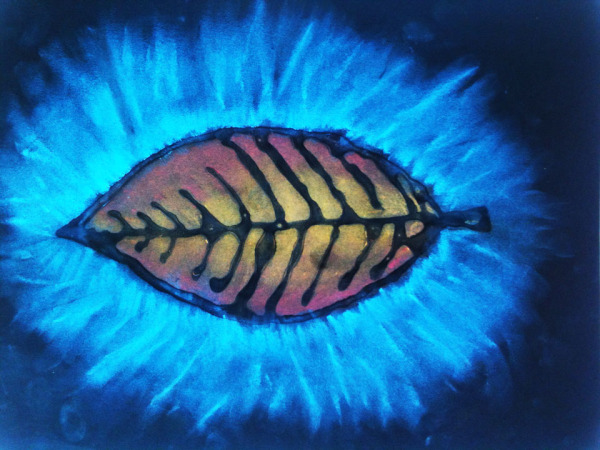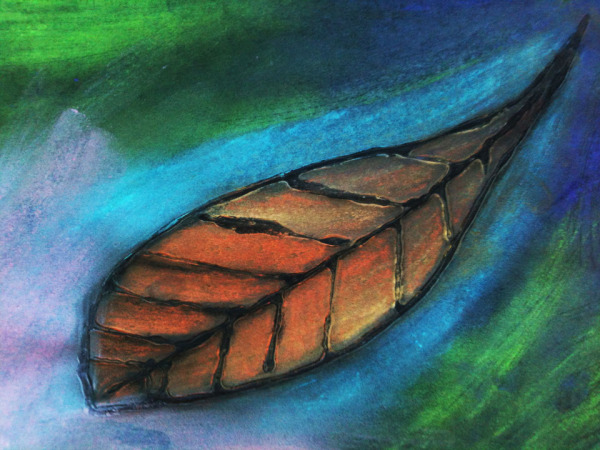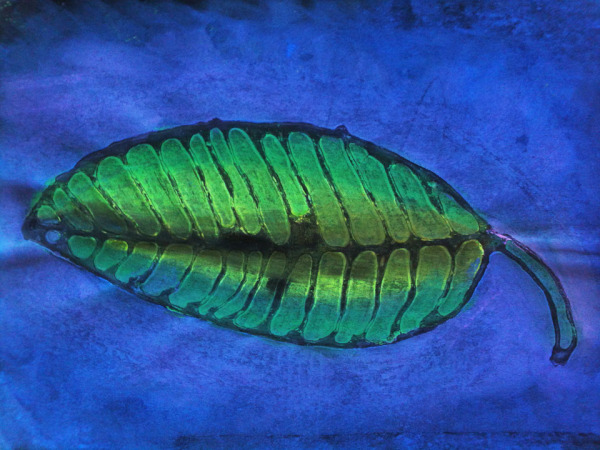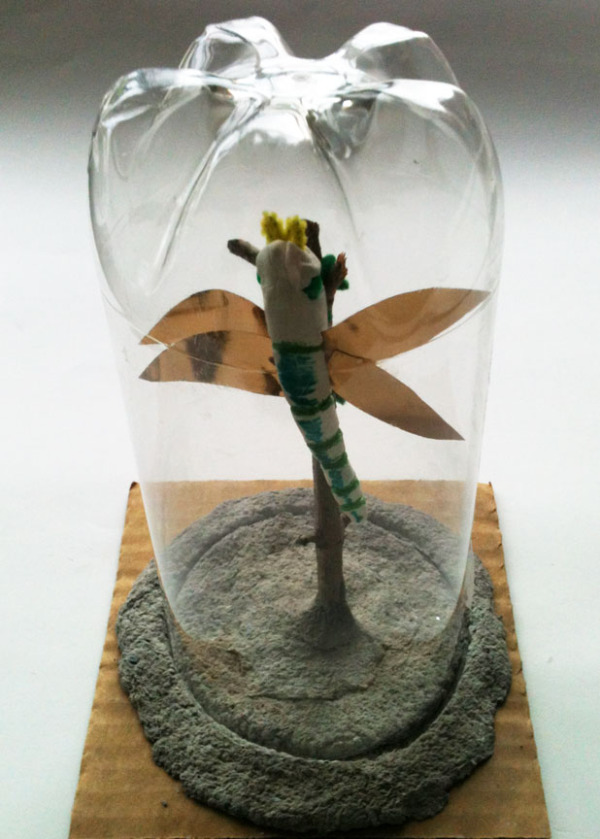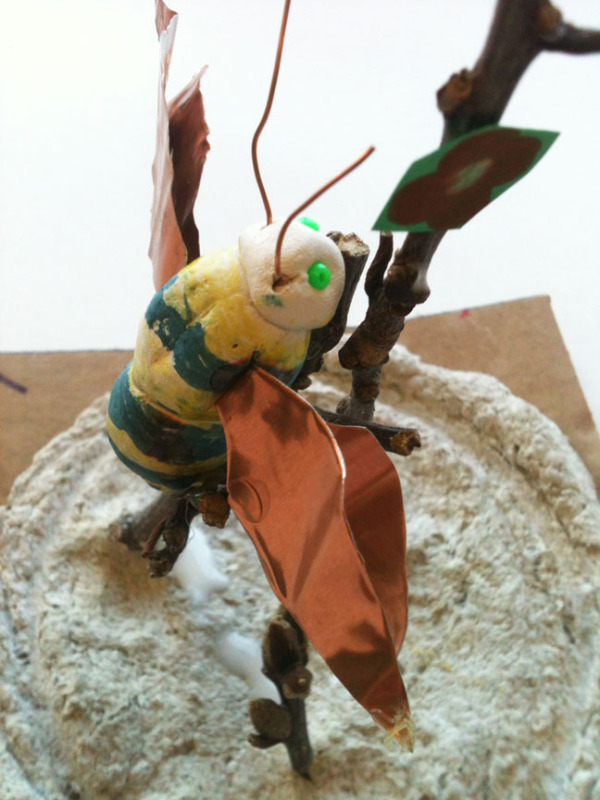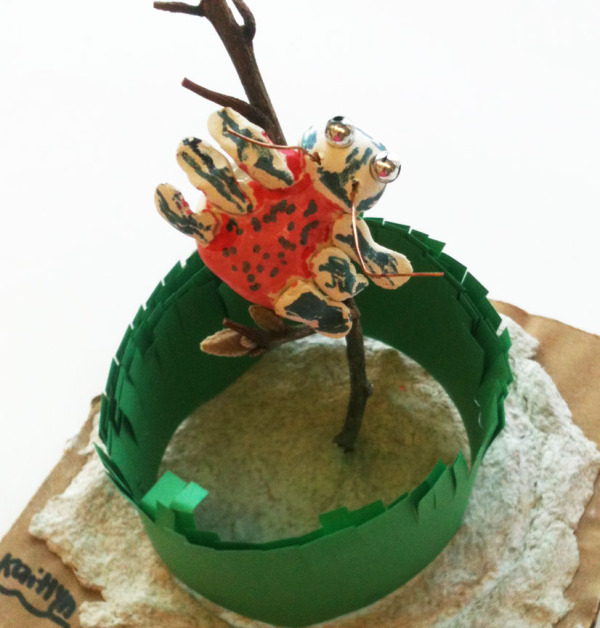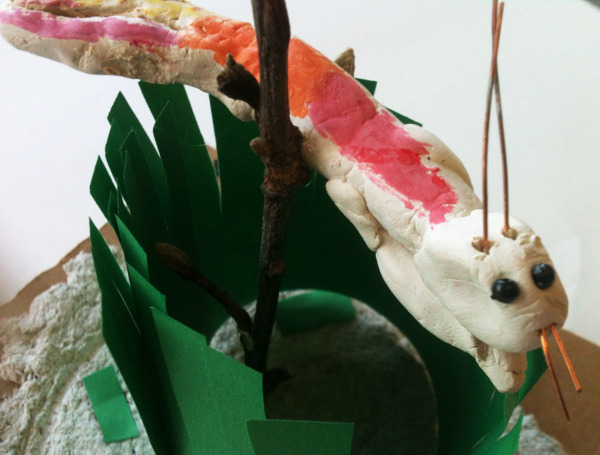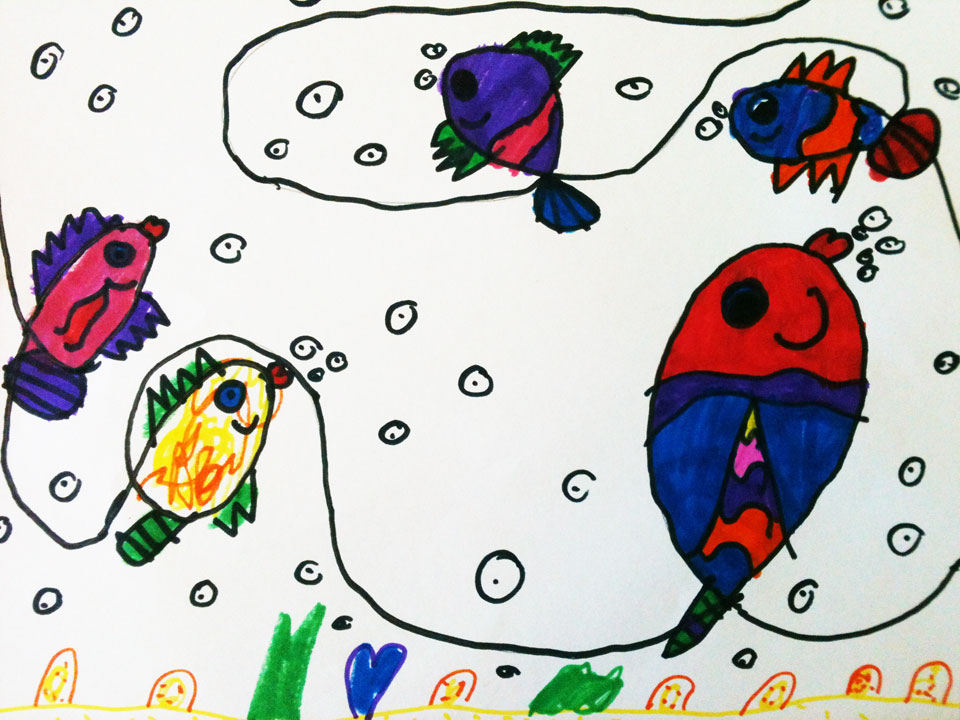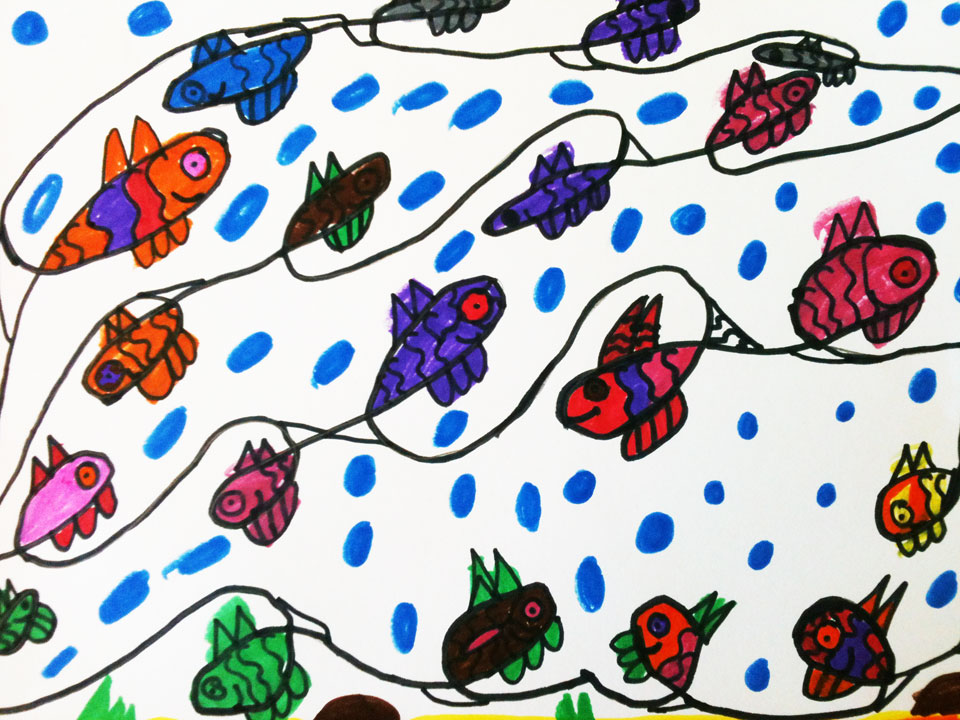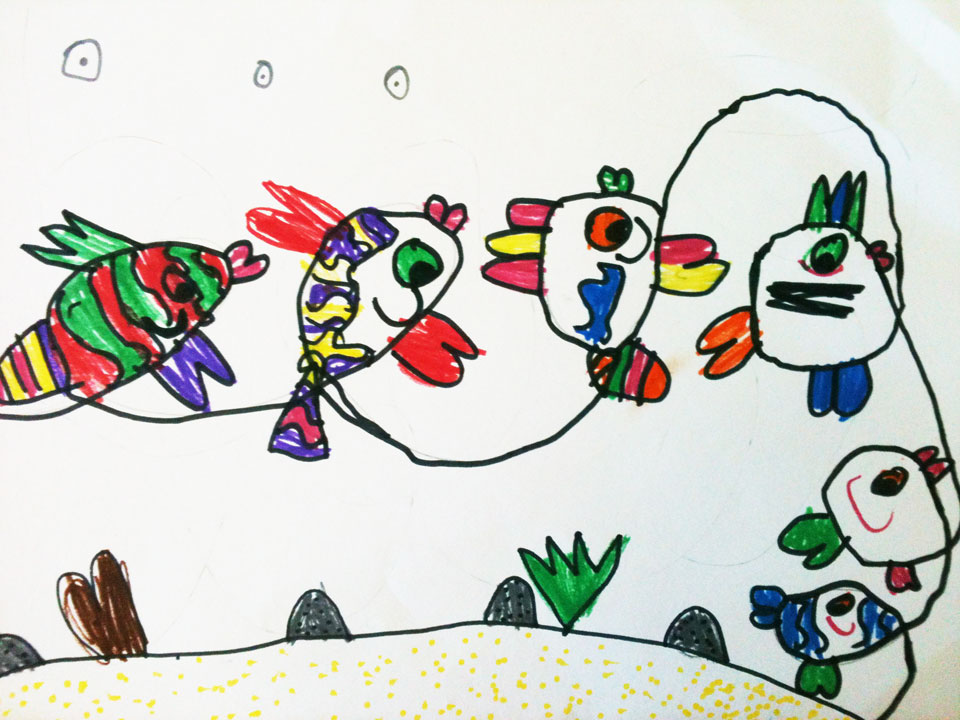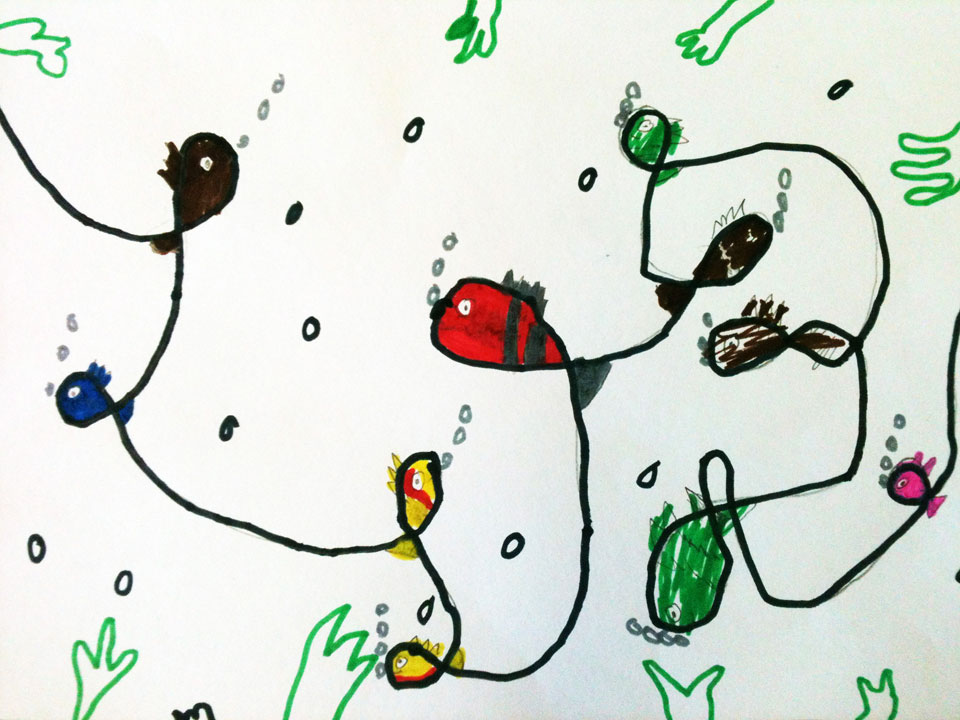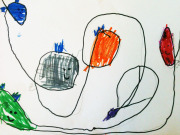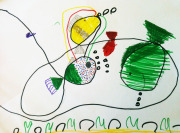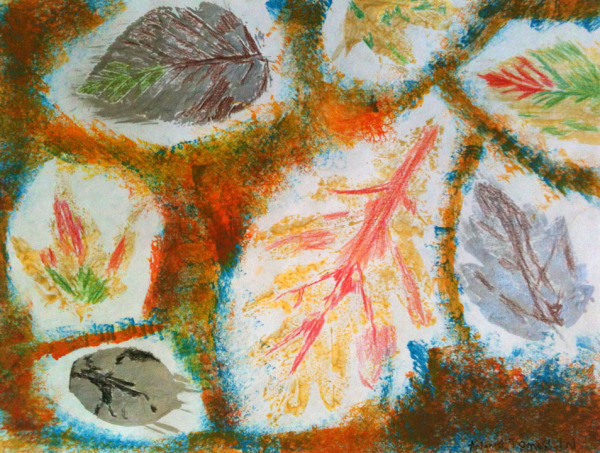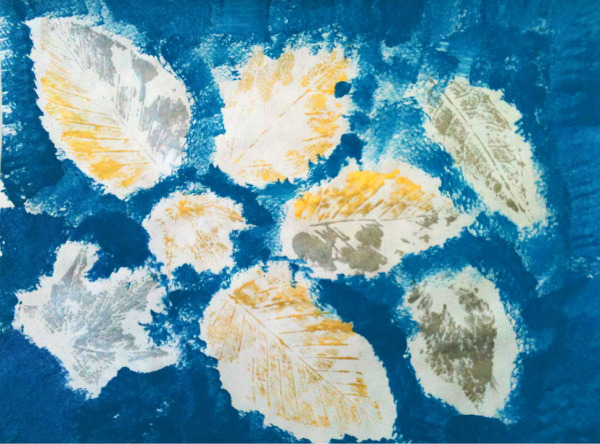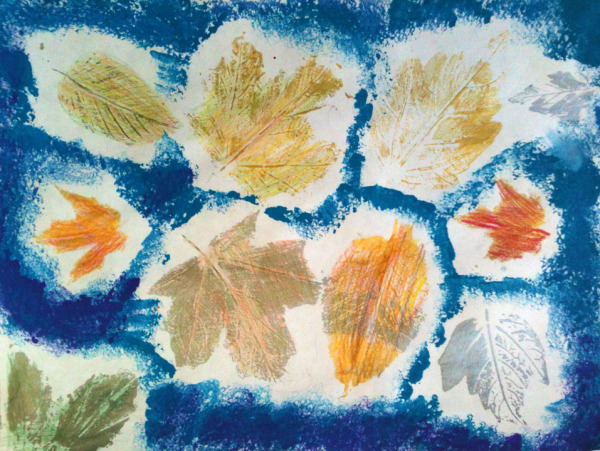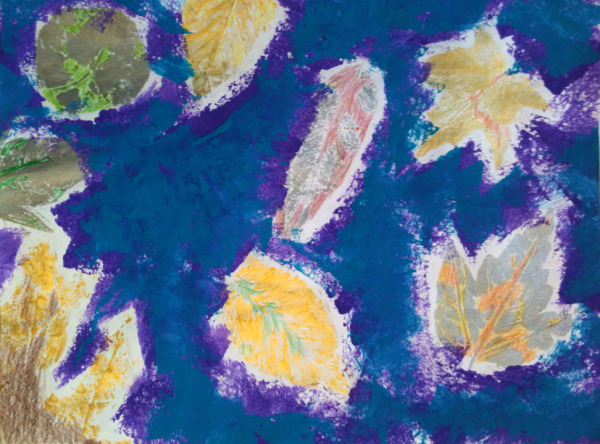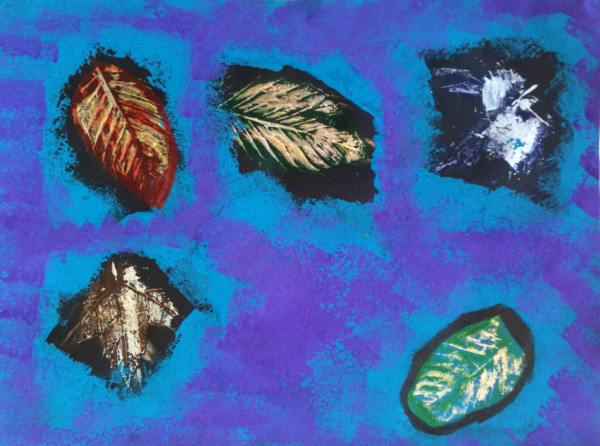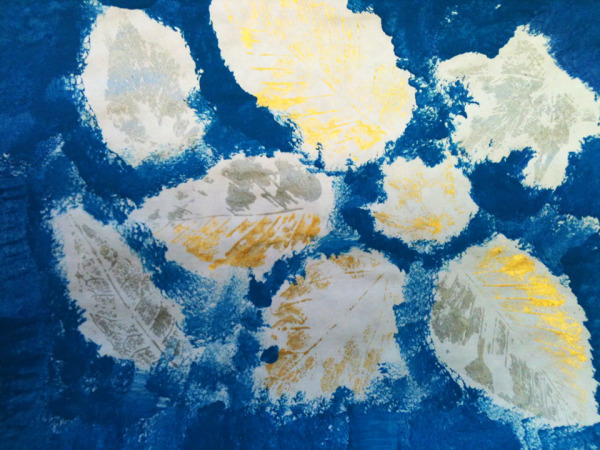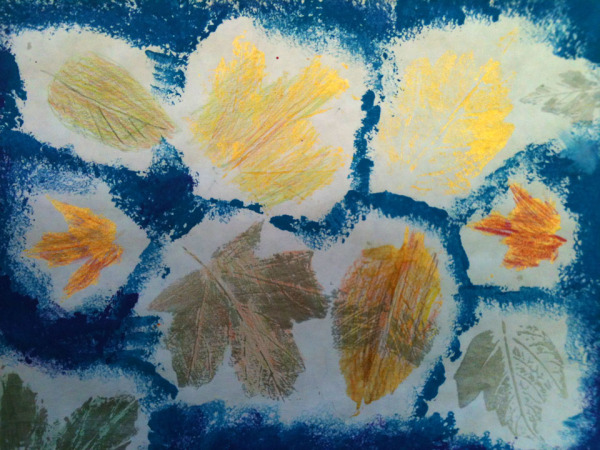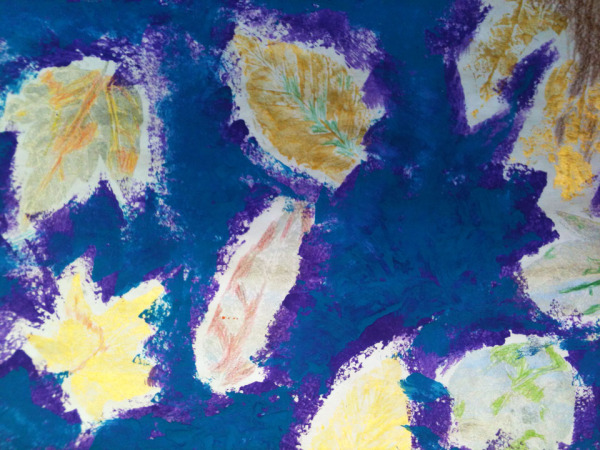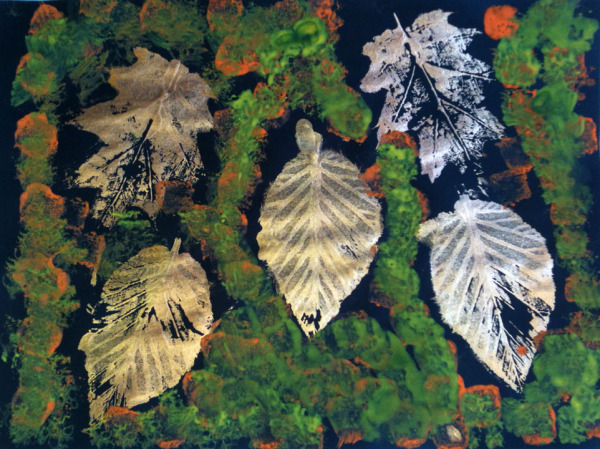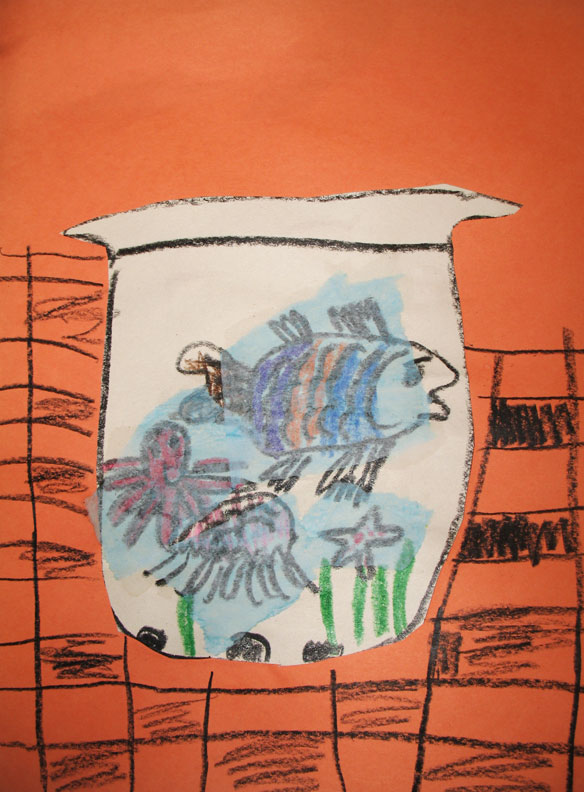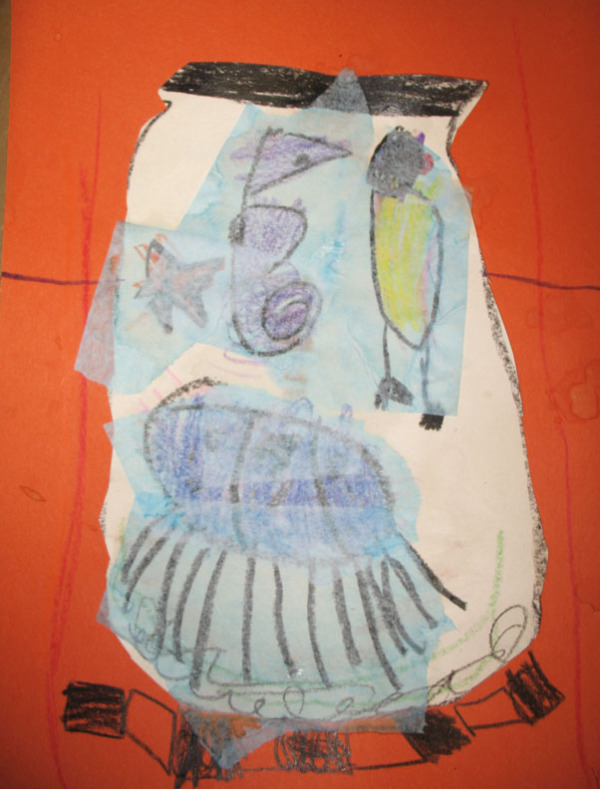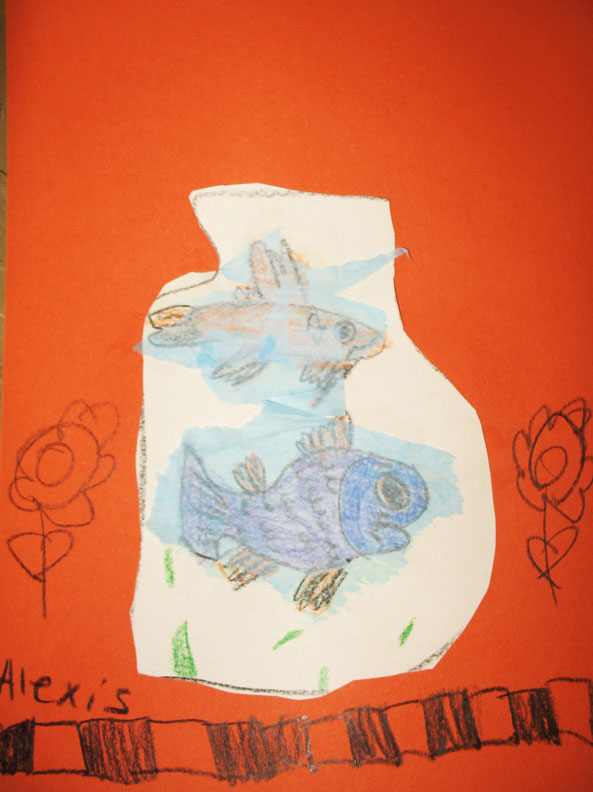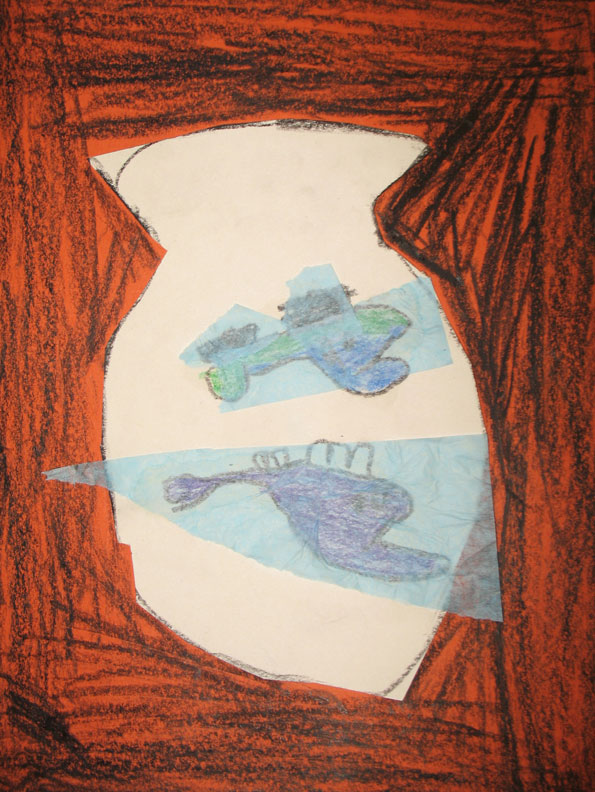Chalk and Glue Autumn Leaves
 Thursday, November 14, 2013 at 12:51PM
Thursday, November 14, 2013 at 12:51PM Here's another leaf project inspired by our beautiful New England landscape. This time we added a twist by drawing leaf shapes in glue on black construction paper. It was easier than it might sound if you've never done it before. The trick is to use only perfectly unclogged bottles of glue. That required a thorough cleaning of 22 bottles of much-used school glue, but the results are worth the time spent. After practicing a bit to ensure steady hands, our students drew their favorite leaf shape taken from the piles we had available to view.
(Luckily, there is no shortage of leaves right now in my yard!)
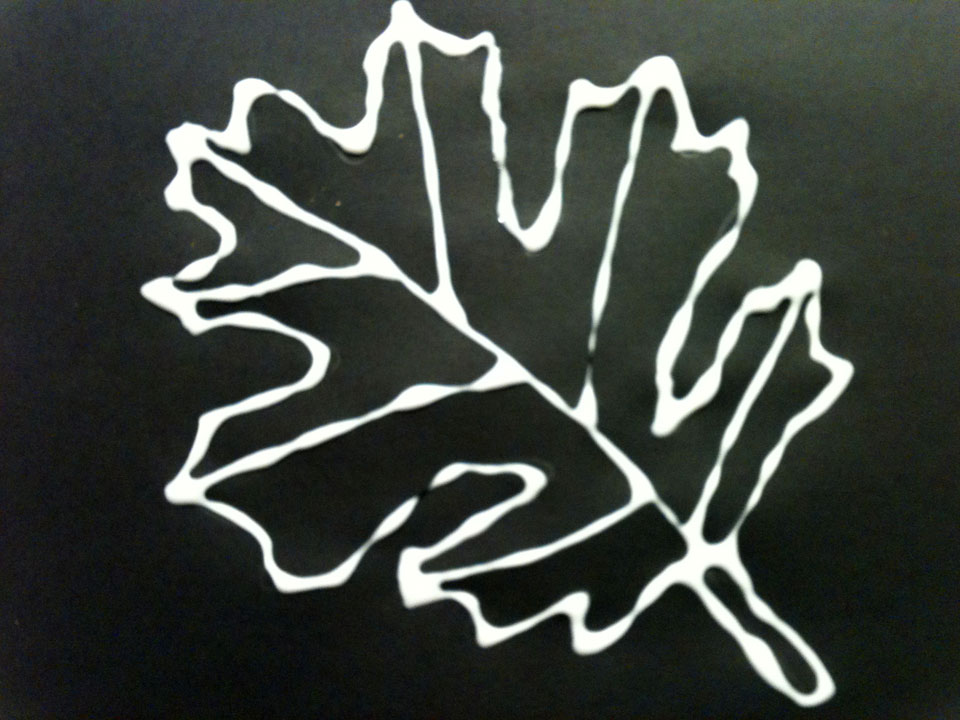
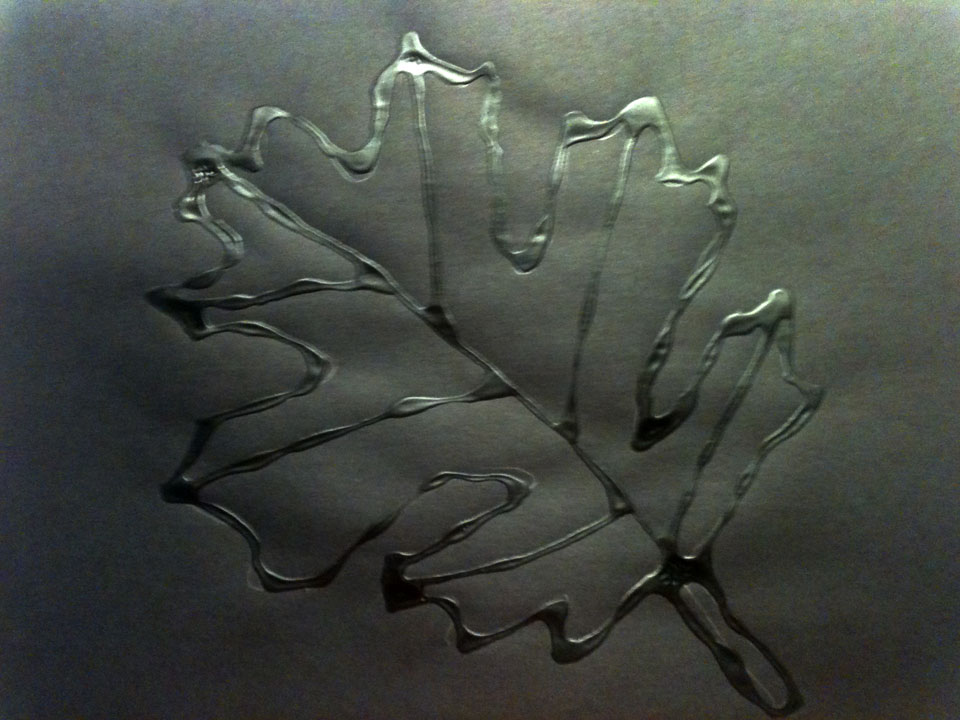
After the glue dried clear, only black lines remained. Students then selected two to three colors of chalk pastels to add to the leaves, blending the colors as they went. If they could see the black paper after blending, they added more chalk. The last step was to color the backgrounds using complementary colors, or colors on the opposite side of the color wheel from their leaf colors. Doing this creates the most contrast and made their leaves really "pop" off the page. Many of the pieces show the intense color chalk pastels are capable of, and some show off more delicate color schemes. I think they are all spectacular. Click on any image to see more of these beautiful designs.
